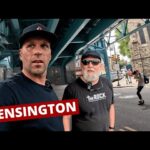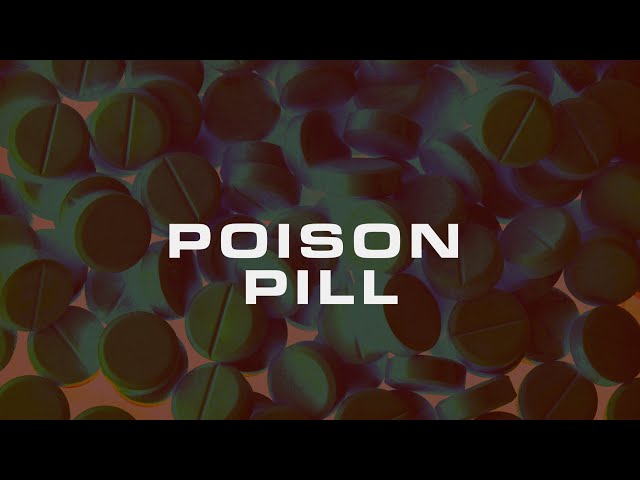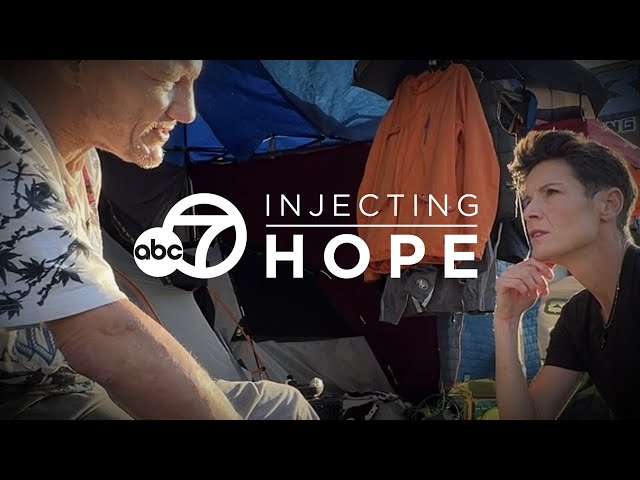Introduction
In 2015, close to 300 people died from fentanyl in Alberta. Many of these deaths were caused by bootlet, non-pharmaceutical pills. VICE presents an immersive and personal feature film about the fentanyl crisis in Canada, told from the perspective of a community of drug users. [Taken from YT description]
The struggles of one young man in this documentary is particularily important. He is an active drug user who continually attempts to seek support. In one scene, he goes to a publicly funded treatment center, expressing his urgent desire for help. However, he is told he cannot begin the program until he is sober for 5 days – he must find the ‘willpower’ to go through withdrawal, despite being homeless and alone.
Later on in the video, he tries to find help again, but he is told the waitlist is going to be a few months. One of the last things he says is, “Honestly, if I can’t get clean at this point, I think I’ll just kill myself. I can’t do this any more.” His story is a very realistic depiction of how hard it is to receive help and is a testament to the fact that people struggling with addiction need support immediately, because many often shy away once told they must wait.
Watch Now!
After watching the following video, you are welcome to share your experience by providing a review of the resource.
Quotes
“Fentanyl is a pharmaceutical drug in the class of drugs called opiates. Initially it was used in the 1960’s for severe pain and operative procedures, and now you start to see fentanyl used for chronic pain patients who have pain from a whole variety of conditions. The fentanyl we’re seeing on the street though is illicitly prepared fentanyl most likely from China.”
“One of the most primitive parts of the human brain is where we sense and seek reward – food, fluids, fun, and reproduction. And the chemical in our brain that increases when we have a rewarding experience is dopamine. When you eat something that you enjoy you get a dopamine surge in your brain. It reinforces that so you look for that stimulus again. The response to drugs of abuse are orders of magnitude more in terms of dopamine. So this is why it’s very common that we see patients who have addictions. They’re always, always, always looking for the reward of the addictive substance. That’s not a will issue, that’s a neurochemical issue.”
“We [Blood Tribe Police] have a mandate to focus on families that are affected by drugs and harboring drug dealers and we’re tasked to go in and shut these homes down … We certainly wanna hold the people that are profiting from the sale of fentanyl accountable, but at the same time, recognize that we need to support the addicts who are addicted to fentanyl.”
“When we say that fentanyl is 100 times as toxic as morphine, what we’re saying is that a pound of fentanyl is the same as 100 pounds of morphine or about 50 pounds of heroin. So, if you’re a drug trafficker you can move a million doses of fentanyl in a shoe box or in a glasses case, compared to requiring a skid for morphine.”
“The homes are owned by the reserve, so they’ve been given a Band Council Resolution, which is a legal document from the Chief in Council that says, If there’s suspected drug use and harboring and dealing from residents, that they can make entry into that house.”

“I’m scared that I’m gonna do too big of a line but I just wanna do it. And I don’t know how to fix that.”
A’LISA – IN RECOVERY
“I don’t think it’s an exaggeration to say that Canadian doctors’ prescribing of opiates over the last couple of decades has really had a substantial role in determining this opiate addiction problem that we have here. We prescribe opiates for minor pain conditions, we prescribe opiates long-term for chronic pain conditions. And I have a really hard time believing that Canadian people, patients, feel pain differently than their counterparts in other parts of the world.”
“Naloxone is the antidote for an opiate overdose … what happens when somebody overdoses on an opiate is, the part of your brain that tells your lungs to breathe turns off. Because they’re not breathing on their own, it’s really important to establish an airway for them and the way you ventilate them is, you use this mask you plug their nose, and you blow into their mask. If they don’t come to, that’s when you’re gonna use naloxone.”
“The effective treatments that we have are essentially medication assissted treatment with long acting synthetics opiates, or partial opiates like methadone and suboxone. It’s a medication that the patient will take everyday. It just keep them from having cravings and withdrawls, and it’s shown to help their social function, family relationships, decrease in the involvement with criminal activity and such. When we get them on treatment, it’s almost as though there’s a complete awakening.”
“I work [at the Dream Center] as an operational support worker and I help take care of the guys and when they’re struggling, they come to me and I relate and we talk about it and we go through our problems together .. I just let them know the same thing that I learned that day is that, you do matter and that it is possible to have people care about you.”
Continue Learning
Please view the following additional resources to continue learning about some of the topics discussed in this resource. If you have any suggestions, concerns or general comments, feel free to contact me as well!





